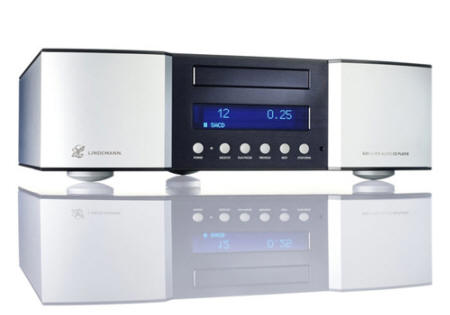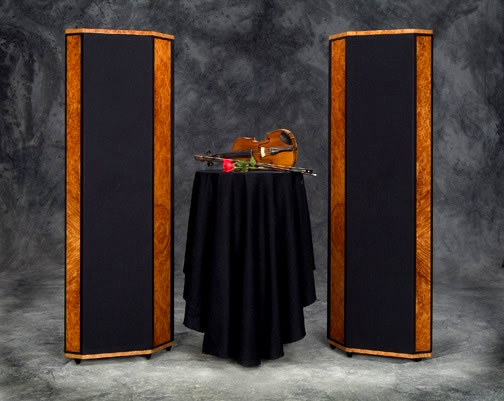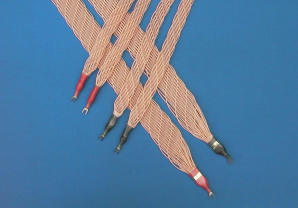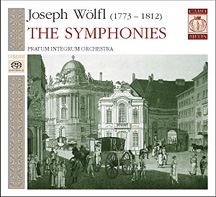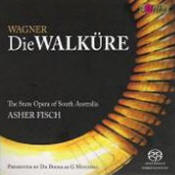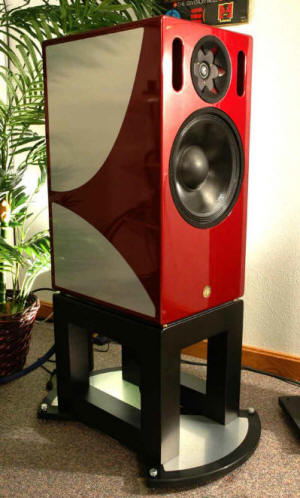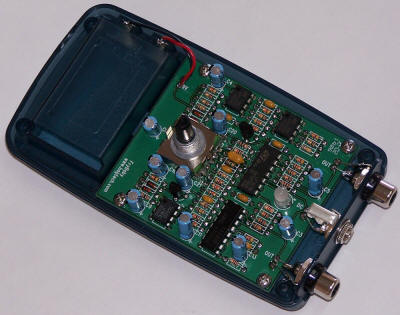|
You are reading the older HTML site
Positive Feedback
ISSUE
28
The Third Annual Positive Feedback Online's Writers' Choice Awards - for 2006 Beginning at the end of 2003, PFO established its first annual awards for fine audio. The Brutus Award was established for the best that Dave Clark and I had heard in our own listening rooms during that year. You can think of it as our equivalent of an "Editors' Choice" award. The Gizmo Award, on the other hand, was established in memory of my very good audio friend, Harvey "Gizmo" Rosenberg, and is given by me to the most conspicuous audiomaniac(s) of the year. Only one Gizmo is given per year. The following is an opportunity for our editors and writers to recognize superior merit in the audio arts though their "Writers' Choice Awards". Our writers and reviewers have been given broad leeway to cite excellence in fine audio wherever they find it: products, people, recordings, events, groups, etc., so that our readers can be better informed. It is our hope that you will find the PFO Writers' Choice Awards to be helpful to you in your audio journey. All the best, David W. Robinson, Editor-in-Chief
Simaudio's MOON SuperNova CD - $5200 My nomination for PFO's 2006 Writer's Choice Awards goes to Simaudio's MOON SuperNova CD player. Focusing exclusively on extracting the utmost from Redbook CD playback, the SuperNova is a sonic marvel. Smooth and refined, the SuperNova strikes an uncanny balance in marrying near state-of-the-art resolution and transparency with superb three-dimensionality and solidity of presence more redolent of analog playback than digital. With its overachieving sonic abilities and feature-laden user interface, the SuperNova has become my reference for digital playback. www.simaudio.com For more details, please see my full review in Issue 27.
Martin Logan Summit Hybrid Electrostatic Loudspeaker - $10,000
The Summit incorporates Martin-Logan's latest thinking in hybrid electrostatic loudspeaker design: a 200-wpc self-powered woofer, an improved woofer cabinet and changes to the basic electrostatic element. Besides being Martin-Logan's most visually appealing speaker, the Summit is far and away their best sounding hybrid electrostatic. What really sets the Summit apart from its predecessors and competitors alike is an uncanny balance between musicality and resolution. The Summits reveal the character and nuances of every upstream component—or microphone set-up—without making one want to run for the hills shrieking in terror. As good as the Prodigys were, the Summits are even more transparent, resolving, effortless and neutral. The Summit's lower octaves are tighter, faster and more extended than the Prodigy. Despite being smaller package than the Prodigy, the Summit possesses every bit the soundstage—and even a bit more than its predecessor. Of course, the million dollar question is as always: Does Martin-Logan achieve a seamless transition between the electrostatic panel and dynamic driver? The answer? The drivers mate far better in the Summit than in the Prodigy; to my ears, the major remaining difference lies in electrostatics and dynamic driver's ability to move air. http://www.us.martinlogan.com
Vinyl Reissue: Lightnin' in New York (Candid Stereo 9010) reissued by Pure Pleasure Records, About the only thing more insane than starting a high-end audio magazine is owning an audiophile record label. No way you're cracking the Forbes 500 list reissuing audiophile vinyl releases; we're talking a true love of labor. Yet there's a treasure trove of great recordings from the Golden Era of Stereo recording awaiting "rediscovery" (most that will never see the light of day on CD). Enter UK based Pure Pleasure Records. While recently browsing the record bins of my local vinyl haunt, I chanced upon and brought home a copy of Pure Pleasure Records reissue of Lightnin' Hopkins in New York (originally released on the short lived Candid record label). While not exactly a household name on this side of the Atlantic (at least not yet), Pure Pleasure's catalog now numbers some thirty-three jazz and blues albums. Featuring the Texas born Hopkins on tour in New York City, this all-tube, 1960 stereo studio recording wonderfully captures the bluesman at work playing piano, guitar and adding vocals. There's no overdubbing here; we're talking two-track at its best. Engineer Bob D'Orleans perfectly captured each instrument's natural timbre and sense of body. Like many reissues, and I attribute this in part to deterioration in the master tapes, the upper octaves are a touch rolled off. Mastered by Ray Staff at Alchemy in the UK and pressed by Pallas in Germany, the album's surfaces are impeccable. Is there a reason for bringing up the topic of the album's record surfaces? Yes. Many audiophile vinyl reissues that have recently come my way leave much to be desired when it comes to quality control. Among the many problem noted are bowing, warping, groove damage, noisy surfaces (we're not talking a few pops and tics!), records cut off center and most annoyingly, records that don't work with the VPI record clamp (note: only one of over 1000 old LPs were unable to be clamped; two of ten from an audiophile label were unable to be clamped). www.purepleasurerecords.com
Devore Gibbon Super 8 - $4000 The Devore Gibbon Super 8s redefines what one can expect from a compact and affordable package. Understated good looks and a musical presentation that has yet to be matched in my living room, makes these speakers a remarkable product and a new standard of what can be accomplished for smaller listening environment. The story goes that John Devore designed these speakers to "fit" within a New York city apartment and fill it with the quality of sound and character of the much larger Devore Silverback. Predominated by a smooth, easy and musical presentation makes the Devore Gibbon Super 8's an absolutely joy to listen to long into the night. www.devorefidelity.com For more details, please see my full review in Issue 26.
The high end is delivering fewer turds to polish these days. There's way more that is good than just 10 years ago. But not being a turd hardly makes you a "best of" product. I only actually wrote a review of one of my Best of 2006 this year, but I have already purchased one and hope to purchase the other next year. These three are products built for enjoyment, not a surrogate oscilloscope.
C.E.C. TL51XR CD Player This is a Giant Killer and the only product on this list I reviewed. Very well built and designed to last. It is as musical as can be, and detailed like live music—you can pick out most any sound you want, you just need to focus on which of the many layers it lives in. It has the continuousness of live music, with the fluidity in the bottom end that conjures up reality. Involving as you'd want, though there are no obvious spikes that demand your attention. Shortcomings? Well, it could be a bit more obviously detailed, but this best CD player bests several good performing $15,000 CD players, no small feat, and every other CD player I've heard to date. Highly recommended. http://mutine.com For more details, please see my full review in Issue 27.
Gamut L5 Loudspeakers Beautiful to look at. Easy to set up. Divine to listen to. Bass is terrific. Depending on your room and predilection, you might be able to do without a subwoofer. My room is very large and spacious and yet I have plenty of bass. Treble is refined, detailed and clear without the slightest sense of hardness, probably due to the very expensive Super Revelator tweeter. Musicality? Yeah, this is not a product designed with an oscilloscope in mind but perhaps with a violin at hand to get things right. The Gamut's want power—think higher powered tube (my 100-watt tube amps acquit themselves well) or high powered solid state. Certainly expensive at $11,000, but in their price range they're a very good buy that people that appreciate fine music and exquisite furniture will appreciate. Review forthcoming. www.gamutaudio.com
E.A.R. Yoshino Acute CD player Another Giant Killer, or is it? If we assume "Giants" are expensive, this is a giant killer because of it's modest, by high end standards, price of $5495. This player bested two $15k players and everything else I've heard. No it's not affordable to those that don't save, but if you can save and want a terrific CD player, this is it. This is the best CD player I've heard yet. Had the Acute been around, I probably would have purchased a less expensive analog set up and simply committed myself to Redbook CDs. Oh, it doesn't play any of the "superior" formats—I'm devastated. Tube rolling allows you to get the sound you want, though I loved the stock tubes. No review forthcoming, though perhaps a purchase. www.ear-usa.com
The Grado GS-1000 headphones - $995 These are a daring about-face example of what a small firm's engineers (John Grado & John Chapin) can do in this, the mature practice of their craft. The latest offering from Grado Labs represents decades of educated trial and error experimentation, the slow and painful development of mastery, and I feel the GS-1000s are a masterpiece of industrial design. They play naturally all the most complex music and no one part of the audio spectrum is emphasized, which some mistake for not being "hi-fi." In addition to being lightweight, comfortable, and attractive, the strength of the design is musical flexibility: the Grado GS-1000s can be sweet and delicate, or authoritative enough to bowl you over, depending on the music. The better the gear that drives them, the better they sound. I've yet to find their limits, even when playing SACDs through an excellent $3500 player (Marantz SA 11S1), and a roughly $3000 Single Ended Triode headphone amp (Single Power's Supra). At the Head-Fi International Meet in Queens, N.Y. this spring, none of the other headphones showed me such universal excellence. Good enough for Accessory Of The Year? Undoubtedly. www.gradolabs.com
Marantz PM-11S1 Reference Series Integrated Amplifier - $4400 Marantz SA-11S1 Reference Series SA-CD/CD Player, $3500, USD. The Marantz Corporation is a world-wide outfit that does much of its business in Europe and around the Pacific Rim. Sometimes large industrial outfits can successfully turn their resources on solving a problem and nail it before they release new products in the U.S. I think that happened with the development of the HDAM©, or "High Definition Audio Module." An HDAM© is a discrete-parts op-amp designed to match impedances. If this is accomplished the HDAM© can be used as a buffer amplifier. Stand-alone buffer amplifiers have been used at the output of lesser quality CD players to soup-up their performance until that approaches the elite CD players. The Marantz SA-11S1 Reference Series SA-CD / CD player, and the Marantz PM-11S1 Reference Series Integrated Amplifier, their next-to-the-top-of-the-line front end, utilize HDAMs© throughout these two pieces that, together, make one of the most exciting bang for the buck "bargains" in the market that I know of just now. Relative to the Marantz Reference Series separates (SACD player, preamp, plus two mono amps) that retail for $31,000, these two pieces do the same jobs, and cost 75% less. The sound is quite similar, without an exact personality, except, perhaps, that they are "reticent." They may share that unprepossessing quality with some of the best Mark Levinson and Musical Fidelity gear that also employ operational-amplifiers of their own design as buffer amps. But Marantz can take advantage of the cost cutting capabilities that large firms enjoy. The result is really neutral sound that comes closer to the audio ideal of "live musicians in the listening room." My Tom Mix hat is off to the Marantz engineers for proving they can still be at the cutting edge. And I have a hunch some of their HDAM© technology will eventually trickle down to even their mid-fi lines, if it hasn't already. For reclaiming Marantz's right to be regarded as one of the leaders in the industry, I name these two products my Front End products of the year. http://us.marantz.com Marta Gomez's Entre Cada Palabra (Chesky JD301) I'm not ashamed to say, "I Love Marta Gomez." The artist, not the person. She knocks me out, "Between The Words." I think her work with her band has carved a new category, one that might be called "Sung Poetry." Her songs are nearly all written by her, and they range from songs of childhood, songs of new motherhood, songs of cooking, songs of luck, songs of love, and songs of love-lost. Wherever she focuses her creativity, she is startlingly original in thirteen Latin American rhythms. Her plaintive voice can move me to sentiments ranging from joy to sadness, and (if I let her) the blues. When I play her version of the Latin standard, "Cielito Lindo," it moves people (Spanish-speaking and not)—no matter their age, sex, or previous condition of servitude. She has the magical quality of being able to take listeners out of themselves and into her world. She is an original, and this record is like nothing I've found to compare it to. www.chesky.com or www.martagomez.com
Headroom's Millett Hybrid Desktop Headphones Amplifier - $600 Produced and marketed by Headroom, designed by Pete Millett, small enough to sit on your desk; this solid-state front end/ tubed output headphones amp gives a fine account of a hybrid design. In my experience, this piece has the best qualities of both. Moreover, it stands up to many headphone amps that range to three times its price. As it is, it is excellent! It can be made up with a fully class A front end, a discrete resistor volume control, and a quieter power supply, which would more than double the price. I think, with those improvements, it would be nearly world-class. As it is, it comes close and for that reason I name it a product of the year. www.headphone.com
ZYX R1000 AiryM-X-SB Moving Coil Mono Cartridge For several years I have wanted to set up a second turntable dedicated to mono playback. This year I finally realized my dream by acquiring a second turntable (Garrard 401), an additional tonearm (Schroeder Reference), and a modded H.H. Scott preamp from 1958 that has pre-RIAA equalization on a selector switch. My initial mono cartridge choice was an inexpensive Denon 102. The Denon had no glaring flaws, but it was not in the same league as my stereo cartridges (Van den Hul Colibri XPW and ZYX UNIverse-S SB). Still, I liked what I was hearing from the mono system, even with the inexpensive Denon 102. Therefore, I decided to replace the Denon 102. The Lyra Titan Mono that I lusted for was way out of my price range. However, I found a good deal on the ZYX mono and bought it unheard. Happily, the ZYX mono cartridge is cut from the same mold as its stereo cousin, the UNIverse. The ZYX mono is neutral, dynamic, and does well at both frequency extremes. With the ZYX mono mounted on my VPI 12.5 arm and Garrard 401, mono LPs come alive as I never thought possible. I have done some back to back comparisons between an original mono LP played with the ZYX mono and the stereo version of that LP played with my ZYX UNIverse mounted on another 12.5 armwand. On some LPs I prefer the mono version played with the ZYX mono to the stereo LP played with the UNIverse. Yes, the sound stage is a lot narrower, but the increased accuracy in tone and timbre more than makes up for it. The ZYX mono has a 1.0 mil conical stylus. It will play the current mono LPs being produced with a .7 mil V-shaped stereo groove. I have tried it and it works just fine. However, the ZYX mono is optimized for the 1.0 mil U-shaped groove that was used prior to the advent of stereo LPs. Also, the ZYX mono has an output of 1.0mv. This output is a bit low for the moving magnet input of some phono stages, like my H.H. Scott. However, with a 1:4 step-up transformer, everything works fine. For mono LPs that were cut using the RIAA equalization curve (from 1954 on), I use the moving coil inputs on either my Herron or Vacuum State JLTI phono stages without any problem. The ZYX mono cartridge does not get the same publicity as its stereo cousins, but it certainly deserves to be on your short list if you are setting up a mono playback system. www.sorasound.com
Zu Druids - $2800 It's that time of the year again! Extraordinary and remarkable as they look, the Zu Druid has to be my overall coup de jour for 2006. Having lived with the Druids for about a year, listening to various ancillary gear, the one outstanding feature which was never lost was their shear love for simply playing music. At a super realistic price of $2800, you can enjoy first rate theatric perfection dynamic realism as well as super low level late night listening sessions due to the single driver (a horn loaded super tweeter is crossed over via high pass filter giving you in essence a single full bandwidth driver concept) and staggering 101db efficiency of the Druids. Trust me, you haven't listened to your favorite vocal singer until you heard him or her through a pair of Druids! Couple the "ownership" experience with the fact that you are backing a company which is truly engaged in bringing forth the much needed Hi-Fi "2.0" revolution and you can't beat the concept or the execution. Super job Zu! www.zucable.com
Sonos Music Systems
Speaking of the Hi-Fi "2.0" revolution, Sonos, a relatively new digital music server upstart, has managed to seize the moment and steam away from the now going on 30 year old Compact Disc (hard to believe isn't it?!) by offering a clever and visually appealing wireless music streaming bundle. Armed with a 3" color screen, you can remote control your music library to your heart's content in any number of rooms throughout your house. The sound quality of the $999 system is simply fantastic; yet audiophiles can easily upgrade and further enhance the quality via the system's digital output. No more getting up to change your CDs; provided you have your library copied onto your computer's hard disk or network attached storage device (NAS), the clever remote control will do the rest—simply pick and choose from individual songs, or your favorite play-list. Since the entire system is tied to proprietary software, upgrading and adding new functionality will always be as easy as installing a new update on your host computer. Congratulations to the Sonos team for bringing forth such a simple yet amazingly effective system to the market. www.sonos.com
Kubala-Sosna's Expression cables Kubala-Sosna's Emotion cables are simply excellent interconnects, but their less expensive Expression line is very close. A 2 meter balanced pair found their way into my system as a borrowed set and I was quite pleased. They exhibit natural timbre and first rate dynamics, not in any way cutting back on the musical energy in the recording. No edge or brightness came through with the superb detail. Audiophiles looking at Kubala-Sosna don't have to go for their top of the line to get first rate performance. www.kubala-sosna.com
Dynamic Design's Nebula THB digital cable Digital cables are becoming less critical as many people go to all in one players. However, those of us with separate transports and DACs struggle to find top notch digital interconnects that let them work optimally. Dynamic Design's Nebula THB (2nd from the top of their line again) work wonders between my Muse 8 Transport and Kora Hermes II DAC. It was able to outperform the cables I own and had access to at the time of audition in terms of energy without loss of subtlety. A one meter link lists for $1000. www.dynamicdesignav.com
JM Labs Cobalt 806 S Big speakers can give big sound, but are not usually at their best in smaller rooms. For my bedroom system, I was looking for a relatively small, but efficient speaker and found the JM Labs Cobalt 806 S at a Sunny Components Inc, in Covina. They're a 6.5" 2 way with an inverted Titanium tweeter. No, it doesn't ring!. The drivers have found their way down from their higher end siblings in the Utopia and Electra line. The Cobalt 800 line was 2nd from the bottom of JM Labs/Focal's selection, now superceded by the Chorus 800V series. Hosting our scorching July meeting Sunny had a closeout sale on these speakers. I bought a pair with matching stands on impulse. As they broke in, the treble has become sweet, detailed and extended, midrange open and natural, and bass has extended down to midbass. I'm impressed by the coherence of the drivers and the solidity of the cabinet. These are revealing speakers that take at least 100 hours of break in to strut their stuff. If you don't plan to play them especially loudly or in a large room, they can make music with as little as 8-watts (say a 300B SET). Limitations are macro-dynamics and anything below mid bass, but don't that stop you. They get a lot right in a compact package. JM Labs can make great little speakers along with their more famous bigger brethren. www.focal-fr.com/home/en/
Rega Brio 3 integrated amplifier If high-end audio needs an ambassador to the uninitiated, I nominate Rega's newly redesigned Brio 3 ($645). With only two knobs and a power button, it's easier to use than a Bose table radio and equally unassuming. Yet it's stunningly clear and transparent right where it counts—in the midrange—and capable in most other areas. While it sounds coarse when taxed, it otherwise reveals a lot of inner detail for not a lot of money. At 49-wpc, this minimalist amp is gutsier than you might expect, driving efficient floor standers with ease. No remote is included; if you want one, you'll have to pony up $1095 for the 60-wpc Rega Mira. On the upside, the Brio 3 offers perhaps the best MM phono stage in its class. Rarely is purist design so easy to enjoy. If life was fair, they'd be selling this thing at Target between the Michael Graves blenders and Dyson vacuums. www.rega.co.uk For more details, please see my full review in Issue 28.
Audio Art IC-3 interconnect "Getting 95% of the sound for 30-50% of the money has always been an intriguing pursuit to me," says Audio Art owner Rob Fritz on his website, and his new line of cables reflects these admirable sensibilities. While Audio Art's entire line-up of interconnect and speaker cables offers excellent value via no-nonsense design, the IC-3 silver/copper stranded interconnects stand out as exceptionally open and detailed for the money. At just $84.95 per half-meter pair, they feel expensive and exhibit commendable smoothness and airiness—all for just a few bucks more than chain store brands. Definitely give these a try before spending megabucks on wire. www.audioartcable.com For more details, please see my full review in Issue 24.
Two of my nominees approach the state of the art and all of them are an awesome value. The EAR Acute Tube CD Player is the best CD player I've heard to date. At $5600 and heard through a top preamp, it performs as well as any CD player upwards of $21,000. That's the most expensive one box player I've auditioned anywhere. Play the Acute directly into your power amps using its built in preamp section with remote volume designed by Tim de Paravicini, and you will hear the state of the art in CD reproduction. Nothing eclipses it including the most exotic two and three box units selling north of $30,000. Don't believe me? Just get your hands on an Acute, hook it up directly either single ended or balanced to your stereo or mono amps, and be amazed. My listening panel of golden eared audiophiles said the Acute sounded better on the CD layer of hybrid disks than the SACD layer did on my reference SACD player. Either direct of through a preamp, its value and performance are tip top and my product of the year. www.ear-usa.com For more details, please see my full review in Issue 27.
Got a budget of $3500 and want superb digital playback. Look no further than the ModWright Sony 9100ES DVD/CD/SACD Player with "Signature Truth" tube modifications on board. Complete with a robust outboard power supply, exotic cabling, and extensive modifications including a custom clock and the finest components, and you have a winning machine. It starts life as a great Sony player and is modified using your deck or a new one supplied by ModWright to produce 90% of the performance of today's ultimate CD gear. But that's only half of the story. The SACD performance of the ModWright player becomes stellar and competes with SACD players in the "cost is no object" category. I could easily live with the performance of this over achiever and not want to spend a penny more. This is ModWright's third generation effort and Sony's fourth. To my ears, no more bugs to work out for either company. This is a no brainer if you want to achieve sonic nirvana and save a ton of money. The ModWright Sony 9100 is even superior to their ModWright Sony 999 by a sonic leap I thought impossible. Way to go ModWright! The 9100 is an easy choice for product of the year. www.modwright.com For more details, please see my full review in Issue 28.
Just out, the Harmonic Technology MagicLink Two Interconnects at $880 the meter, are the very best performing, most musical interconnects, under $1000. Beating out dozens of brands at and below its cost, to me it's the right cable in about any system, tube or solid state. Intensely musical, wonderfully organic, and nearly neutral, there is nothing less than $1500 that can out-perform it. Made of low molecular, high purity copper and silver, and terminated in excellent connectors made by Furutech exclusively for HT, I found them user flexible and musically involving. Very open sounding and almost grainless, they now approach the unsurpassed Cyberlights also made by HT. With loads of dynamic range, they have an airy open high band, highly detailed and organic mids, and powerfully deep textured bass. Significantly better than the MagicLink Ones from top to bottom, they are "best of class" at this price. I am astounded how musically right they sound even compared to my vastly more expensive cable references. Harmonic Technology has built its reputation on super performing/reasonably priced cable products. They did it again with the MagicLink Two. HT has earned this product of the year designation. www.harmonictech.com For more details, please see my full review in Issue 28.
Audio Purist Design's 20th Anniversary AC Power Cable This outstanding power cable is my only choice this year in the equipment category. It was an unexpected but easy choice because it offered sound quality significantly better than other well-regarded and expensive AC cables. I have heard comparable differences between different models of power amplifiers from the same company. A great deal of the unexpected improvement offered by this cable is because of the unique, thick, heavy and only slightly flexible shielding. As a unique and well-engineered (five year development) top quality product, it is priced accordingly though it offers a bit of potential savings. To any ordered or offered length of this AC cable, the company adds, at no additional cost, approximately 8 inches of the underlying relatively unshielded and basic design cable as connections with greater flexibility as well as length at each end. A potential money saver for listeners that now have truly good and neutral tonal quality AC cables, is that far and away the majority of the significant improvement offered by these cables does not necessarily require replacing all of their present AC cables. I've found that most of the improvement came when used with power amplifiers. That would follow current audio thinking that the AC power cable is thought of as the beginning of a component's power supply. For listeners with a stereo power amplifier only one of these AC cables should offer very significant improvement. For others, each monaural amplifier for a stereo system will require one of these cables. For listeners with a pair of amplifiers and a pair of self-powered sub-woofers, a total of four cables would be required at a minimum. Jim Aud basically agrees with my findings. He says that much of the great improvement offered by these new cables is due to the superb shielding that results in an outstanding signal to noise ratio. In addition to the greatly improved clarity, detail and soundscape depth of field overall, is the tremendous detail in the palpable bass power range while seemingly even adding a bit of apparent volume gain. The list price is $2500 for the first meter and $200 for each additional half meter. www.puristaudiodesign.com For more details, please see my full review in Issue 26.
My first selection for Positive Feedback Online's writers' choice music awards for 2006 is the Naxos (American Classics Series) release of music by Howard Hanson # 8.559251. Though the title of this release is Howard Hanson's Organ Concerto, it is actually a number of fairly short compositions, all of course by Hanson. Each of the selections features very clearly and detailed sound quality of a different instrument. Beautiful and very natural tonal qualities surround clarinet, bassoon, piano, flute, viola, oboe and harp! All are excellently performed by the soloists and the Philadelphia Virtuosi Chamber Orchestra conducted by Daniel Spalding. The sound quality is simply superb and cannot be faulted in any way. Audiophiles will be impressed by the powerful organ pedal notes and natural sound perspective. The overall soundscape perspective on all the tracks is outstanding. This is easily the equal of anything I have heard in many months with a particularly full and rich sounding atmosphere for a recording of a chamber orchestra. Highest recommendation would be given at any price and at Naxos' usual low price consider it an unbeatable bargain. My second award winning music selection is the London Symphony Orchestra's LSO Live label's Special edition 6 SACD #LSO 0598.
This six CD release of all nine of Beethoven's Symphonies plus his Triple Concerto is monumental, superbly performed and will eventually be regarded as a historic release. The London Symphony Orchestra has become the most recorded Symphony Orchestra in the entire world and is easily ranked as one of the five best in our universe. A great deal of that is due to their great number of recordings they make for film soundtracks. The orchestra's usual performing site in London is not generally regarded highly as a recording venue. That fact, at times subtly mars an otherwise fine recording, particularly the outstanding SACD hybrid disc. Classical music lovers will simply feel that they have to attain this recording. Classical music lovers will also discover that the fine SACD version of this outstanding release of these outstanding performances will add greatly to their enjoyment of Beethoven's masterpieces. So far my favorites here are numbers 3, 6, and 9 (choral). My third award winning music selection is actually a "readers' preference selection" from 2 older and very popular Telarc releases now receiving "the crown prince" of sound effects, Michael Bishop's best efforts.
Reader's choice is between the much older Round-Up Telarc SACD 60141 and Mega Movies Telarc SACD 60535. Listeners, please purchase the SACD versions and sooner (hopefully) or later listen on a decent surround-sound system and simply enjoy and enjoy! Listeners may not routinely listen to either one after the novelty wears off but will pullout one or the other when visitors are present to impress or shock them. The sound effects are truly of the showoff spectacular variety on Mega Movies and are on separate tracks playable separately as desired. Some care should be exercised as the dynamic range allows high sound pressure levels to reach well up into the treble range (consider your possibly fragile tweeters) as well as in the bass where they are very, very palpable. At first I was going to call the Round-Up release subtle but with some of the passages people would think I was out of my mind (more than usual that is). However, somehow the Round-Up release is more atmospheric and in keeping with the character of the music where as the Mega Movies release is about spectacular added sound effects. There my favorite is the superbly natural sounding foghorn on the Titanic track. There are a very few spots in the older release that technology could not upgrade to Telarc's current high standards.
Burwen Bobcat Software Suite/Daniel Hertz Model 1 USB DAC - $1995 This product, while not much to look at, is the cure for digital psychosis. It has allowed me to get back in touch with music and forget about equipment upgrades and new digital formats. My listening sessions are so much more pleasurable. I come away invigorated and marvel at what my system is now capable of doing for me emotionally. I would nominate this product for a Grammy Award. Dick Burwen and Mark Levinson get my thumbs up for such a marvelous product. http://www.danielhertz.com For more details, please see my full review in Issue 28.
(reviews to follow soon)
SP Technology Timepiece 2.1 http://www.4sptech.com/version2/index.html
Acoustic Zen Technologies Adagio - $4300 www.acousticzen.com
SAMSUNG DVD R-135 Upsampling Recorder/Player
Manley Mahi amplifiers The Manley Mahi is a set of two mono amplifiers and they are charming in a subminiature way. They almost fit side by side on a standard rack shelf but you'll probably just set them up on top of your speakers to show them off. Everyone who looks at them marvels at the unique shape and beautiful craftsmanship with recording studio aesthetics. Some think that small amplifiers look toy-like because of their size, but these are seriously made audio products from right here in the good ole US of A. No worry about waiting forever for some obscure part on the "slow boat from China" or whatever. You can have them serviced, should the need arise right here in California! The handsome chassis is painted crackle dark gray, with crackle black on the transformers. All the tube placements, switches and bias test points were beautifully silk-screened in white legible lettering. Quality RCA inputs and real WBT speaker posts exhibit a quality consciousness that is not often found at that price point and I give Manley five stars for the presentation. I give them the outright BEST rating for the most fun reading "Owner's Manual" that should serve as a model for other manufacturers. When I first reviewed them I noticed that the amplifiers were voiced with an extremely open upper end with a noticeable presence on midrange and lots of air when in the more powerful UL (ultra-linear) mode (40-watts), with standard feedback setting. They can operate in both the triode (22-watts) and the ultra-linear mode, but you must shut things down to make the switch, no on the fly switching. But their other options make for a versatile package as both triode and ultra-linear methods of operation have three different feedback options for each mode that changes to power output – see manual for specifications. Switching to the triode mode produced more detail in the presence region while the bass was a little more subdued by comparison. These amps played without any hitches, pops or unusual tube noises other that a slight tube rush heard from each speaker noticeable at closer than about 4 feet, but this was nothing that interfered with the music from the listening chair. I look back now and realize that I missed the call on the type of speaker system that would bring out the advantages of these amplifiers. Think of the older English classic "house sound" like the older Spendors -BC-1s and SP100s, the Wharfedales and classic dual-concentric Tannoy monitors of twenty and thirty years ago, or even the great Dynaco A-25s (a Scan-Speak design) from that era. All of these loudspeakers and others of that period had that impressive bass that did NOT call for a subwoofer. These bigger boxes held higher sensitivity speakers and they may be just what the Mahis need for the classical music listener. I'm guilty of trying to hook them up with today's trendy speakers with their 5 and 6 inch bass drivers and this was my mistake in auditioning them. Manley needs to be applauded for their work and goes to the extreme to produce each of their audio products with as much effort as possible to have things are done in-house. They wind their own transformers, design and fabricate their own printed circuit boards. (Manley does not believe that "point to point" hand wiring results in consistent product to the customer and I think they're right on this as some of the claimed "point to point" wiring products exhibit poor soldering by unskilled labor with noisy humming outputs to boot.) In a time when everything seems to come from across the great water, it's comforting to me to see companies like Manley making such a competitive line. Especially when the other USA manufacturers are pricing things out of reach for most of us. This is one product that I would like to have back in my home order to find the perfect synergy between this pair of amplifiers and loudspeakers with high sensitivity such as one of older floor standers—maybe some Bozak Concert Grands! The Manley Mahi is my recommendation for product of the year or any year for that matter. www.manleylabs.com For more details, please see my full review in Issue 25.
Nanotec Systems Intron Protect 8500 This is the fifth CD coating product I have tried. Optrix, two versions of Auric Illuminator, and RealityCheck have preceded it. I have not heard any iterations of Vivid. All of the fluids I have tried did something good, but this is the first to simply make my CDs sound better in every way, without changing them. With this coating on them, CDs simply sound like better versions of what they were before. Pressed, I'd say they sound more transparent. Can we stop now? Best Classical CDs for 2006 Of course I haven't heard enough of the hundreds of new classical recordings released since last January to claim these are truly THE Best, but I've chased down most that looked promising and among those have found the following most satisfying. They are listed in no meaningful order. Viktoria Mullova: Vivaldi, Violin Concertos with Il Guardino Armonico; Schubert Octet, with the Mullova Ensemble; Recital, with Katia LaBeque. All on Onyx. J.S. Bach, Suites for Solo Cello, Truls Mork, Virgin Classics. Beethoven, Late Piano Sonatas, MitsukoUchida, Philips. J.S. Bach, Cantatas, Volumes 21 and 22. Kon Koopman, Amsterdam Baroque Orchestra and Choir, Challenge Classics. J.S. Bach, Cantatas, Volumes 19, 21, 26, 7, John Eliot Gardiner. Soli Gloria Dei. Dvořák and Augusta Reid Thomas, Cello Concertos, David Finckel. Artistled. Florestan Trio: Mozart and Saint-Saen, Piano Trios. Both on Hyperion. Mahler, Symphony No. 2, Boulez. Deutsche Gramophone. Music @ Menlo, 2005. Alain Planès: Schubert, Piano Sonatas; Debussey. Both on Harmonia Mundi. Shostakovich, Complete Quartets, Sorrel Quartet. Chandos. (review coming) Mendelssohn, Complete String Quartets, Pacifica Quartet, Cedille. (review coming) Shostakovich, Violin and Viola Sonatas, Isabelle Van Keulen and Ronald Brautigam. Challenge Classics. Shostakovich, Violin and Viola Sonatas Orchestrated, Gidon Kremer & Yuri Bashmet. Deutsche Gramophone. Ben Johnston, String Quartets 2,3,4, and 9, Kepler Quartet. New World Records. I have not yet listened to Osvaldo Golijov's Ainadamar and the Nagano recording of Poulenc's Dialogues of the Carmelites and so will move them into consideration for 2007.
Audioquest Sky interconnects For someone who didn't like silver cables at all before this, the Audioquest Sky interconnect was a revelation to me. This is the first and only silver cable that actually delivers on the potential benefits of silver cables. All previous silver cables I've heard, and I've heard a lot of them, sounded thin, edgy and elevated in volume at the upper mid and high frequencies. They sounded like they had a resonance, a "ringing" in these frequency ranges, not to mention that they also had very little upper bass and, well, you could forget about the mid and low bass ...they had none. I also heard the benefits of these previous silver cables even through their deficiencies as stated above. Silver cables have a clarity, a transparency, more see-through quality, as well as more open and airier higher frequencies. Up until the Sky interconnect, the deficiencies of silver cables far outweighed their benefits, in my opinion. The Sky interconnect is a world-class interconnect cable that is extraordinary. It marries all the benefits of silver cables with virtually none of the problems. It has a clarity, a transparency, a way of getting out of the way to let the immediacy and the liveliness of the music through, not only to reach you, but also to touch your soul, to move your emotions, which is what music is supposed to do. The high frequencies are extended, open and airy, and yet they are sweet as well. As a matter of fact, the entire musical range is sweet and not edgy or aggressive in the least ...a first for a silver cable in my experience. The mid-bass is also excellent, and even the lowest bass is very good. At the lowest of frequencies it does not reproduce the depth and weight of the music like the Purist Audio Design Aquious 20th Anniversary interconnect, which is state of the art in this arena. By the way, no other cable I've ever heard does bass as well as the Purist Audio Design cables, which is a reference in this frequency range. The DBS battery system which polarizes the dielectric insulation of the cable also makes this cable very quiet, which results in the noise floor dropping down a "couple of stories". Add to this that the DBS system makes the cables almost fully "broken-in" right from the start, as well as keeping the cable fully charged and ready to go at any point, and you have yourself an exceptional, phenomenal sounding interconnect. The Sky should sound even better than it already is, because Audioquest is now using a "cold weld" to connect the cable conductors to the RCA or XLR plugs, as opposed to the welding of the connector used up until this point. Not a cheap interconnect, but worth every penny in musical satisfaction. I'm buying it. What more do I need to say? (Review to come) www.audioquest.com
Evolution Acoustics MMthree This year I only choose two products for my Writers Choice Awards. The first goes to a recently introduced loudspeaker and the second to an established product that recently benefited from a world class upgrade. The Evolution Acoustics MMthree speaker system is the new product, a joint design from Jonathan Tinn and Kevin Malmgren. Von Schweikert Audio previously employed Kevin who was involved in product design. To me the character of the MMthree shares some of the look of the Von Schweikert VR-11.
This speaker was making loud, dynamic music with moderate power at the recent Denver AudioFest and I wondered how the 100-watt amplifier managed this task so easily. The secret is the speaker's internal 1000-watt power amplifier, taking charge of the dual 15" woofers. There are several controls on the rear panel for altering the sound and I was allowed a bit of freedom to experiment. To me, a slight reduction in treble and tightening the bass did wonders in that particular room. These controls worked so well, that with some experimentation I believe it could be adjusted to match an almost unlimited variety of amplifiers for the midrange and high frequency drivers. In fact, I would have preferred experimenting with tubes on top, but that's a matter of personal taste. The twin midrange drivers are the super premium 7" Accuton ceramics, and appear to be the same as chosen for several others of my favorite speakers, The Martin Design, Kharma Exquisite and Avalon Isis. The high frequency driver is a 5" ribbon tweeter with the whole package rated at 93 DB efficiency. The woodwork was first rate and although I did not see the Evolution MMthree with the grills covers in place, I think this would make a handsome addition sonically and visually to any audiophile wanting first class sound. www.bluelightaudio.com
Walker Proscenium Black Diamond turntable My second recommendation for PFO product of the year is for the Walker Proscenium Black Diamond turntable. Although the Walker turntable has had several upgrades over the years, the Black Diamond designation refers to the new super hard substance used in the manufacture of its linear track tone arm. The new material replaces the old material in both the tonearm and the air-bearing spindle.
I spoke to Lloyd about the upgrade and while he would not confirm precisely the material used in the Black Diamond, he said it achieved its name because its second only to a diamond in hardness. I assume this new material must be from the Corundum family as this is Rockwell ranked closest to a diamond. I suppose only a diamond will serve to work this material, making it very labor intensive to construct. In any case, Lloyd Walker has succeeded in moving the Proscenium beyond the competition again with this upgrade. Unfortunately, the Black Diamond has seen such low production that I have not received the one I have on order. Judging from my initial audition and the recent review at Absolute Sound I believe this will reaffirm the Walker Proscenium's position as the top performance playback machine for analog reproduction. www.walkeraudio.com
Lindemann 820 SACD Player - circa $12,000 US This remarkable player continues to be my nominee for best single box player in the world. The alluring combination of fine aesthetics in operation, and a beguiling combination of grace and delicacy, mated with rock solid slam and bass extension, leave very little to be desired. It's one of those rare pieces that operates as elegantly as it sounds …and it sounds …sublime. Herr Robinson says it isn't quite as revealing as the new Meitner two-box player …but it is so unerringly musical I am betting no one will care. For more details, please see my full review in Issue 24.
Esoteric Sound Products (ESP) Concert Grand Si Loudspeaker - $40,000 Returning to this updated version of the classic Concert Grand has been a revelation. Minor quibbles with the original (fixed cover, restricted LF, and a very slight loss of transparency) are all resolved in the new issue of this huge floor stander. Given sufficient input and room to breath, the Grand will fill your space with luxurious sound that is at the same time, rich and musical, and detailed and transparent. Lister fatigue is practically nonexistent and the speakers are equally at home with any program material. Be warned, they need a big room and they like lots of current. For more details, please see my full review in Issue 28.
Lastly, the Jena Labs line of cabling and power conditioning modules. From the phenomenal Dreamdancer and Pathfinder interconnect and speaker cables, to her brand new Two EZ, split (one in, two out) AC conditioning power chord (for monoblock and dual mono power amplifiers) and throughout the lesser iterations, Jena Labs is distinguished by the best materials available, proprietary Cryo treatment, and hand craftsmanship by Jennifer and Michael White Wolf-Crock. Unlike most such products that function essentially as tone controls, the Jena Labs products are devoted to passing the signal with the least amount of alteration. When you know enough about audio to understand the difference between HiFi and hype …these are the cables you want. www.jenalabs.com I would be remiss if I did not add the Critical Mass Isolation system to my writer's awards for 2006. This extraordinary equipment has literally transformed my system to the point I cannot imagine life without it. Virtually everything I have sits on Joe's amazing platforms and stands. Used alone or in felicitous combination with the Billy Bags amp stands, this exquisitely engineered and crafted system is simply amazing. www.criticalmasssystems.com
Caro Mitis: With my securing the entire current Caro Mitis SACD catalog for my library (with the exception of the Schnittke recording), I can say beyond a doubt that this still young Russian label is truly outstanding. I have yet to be even remotely disappointed with any recording from them. Stunning sound, transparency, air, warmth ...you name it. Some of the credit should go to the stellar team from Polyhymnia who does the recording work. What else is special?? How about top notch ensembles like the Pratum Integrum Orchestra and The Hermitage Chamber Orchestra? How about virtuoso soloists like oboist Alexi Utkin and Olga Martynova? Finally, let us not forget the superb artwork that adorns each release. These recordings are a treat for the eyes and ears! www.caromitis.com For more details, please see my full review in Issue 26.
Melba Recordings (Australia) for Das Rheingold and Die Walküre: Kudos to this recording company from "down under" for undertaking such an ambitious project! Few musical compositions require such titanic forces to perform and record like a Wagner Ring opera. Many hours of singing, huge forces in the opera pit…a truly fiendish project to pull off successfully! However, Melba rose to the occasion with the first ever Ring Cycle recorded on SACD. Decca made history in the late 1950s and early 1960s and Melba is making history in 2006 and 2007 with the release of these four monster operas. Oh, how do the first two sound? Outstanding, with a tremendous sense of space, detail, balance between singers and the pit. Excellent singers to perform some of the most emotionally charged and physically demanding music ever written. The last two operas will be released in the first half of 2007 (if the two remaining operas are as good as the first two, look for a repeat nomination for '07!). www.melbarecordings.com.au For more details, please see my full review in Issue 26. Evolution Audio MM-3 Loudspeakers (RMAF, 2006): These speakers made their debut at this year's RMAF. My first impression of these speakers started on Thursday, the day before the show started. Even while Jonathan Tinn and Kevin Malmgren were dialing in the system I was still impressed with what I was hearing. By the end of the show, the room was my personal choice for best in show. And at $38,000 a pair, these speakers have to be the steal of the century. www.bluelightaudio.com
Escalante Design Fremont - $18,990 Through all my years chasing musical nirvana (commencing in the late nineteen sixties), the elegant and innovative Escalante Design Fremont is the most naturally musical sounding loudspeaker I have yet encountered. In fact, only a handful of loudspeakers have left similarly lasting impressions: the original Quad ESL in the 60s, the Dahlquist DQ-10s in the 70s, the Acoustats in the 80s, and the VSA VR series in the 90s. Simply put, they deliver music in a natural and organic manner, recreating all kinds of music with warmth, coherence, dimensionality, presence, texture, and a sense of immediacy that is both unmistakable and unique in their price range. Their unfaltering accuracy of pitch, their nearly unparalleled ability to accurately render timber, instrumental attack, body, and weight, conflated with their exceptional degree of sonic clarity, make them not only one of this decade's most significant designs, but a sheer musical bargain at their price as well. For more details, please see my full review in Issue 26. Acoustic Zen Technologies Adagio - $4300 What stirring musical overachievers! Just minutes after hearing them for the first time at last January's T.H.E. Show during the 2006 CES, I knew that audio maven Robert Lee had created something exceptional. In addition, with their delicately curved side panels and impeccable finish (in either a bold red or natural Mappa Bur), they look as gorgeous as they sound. Mine have been singing away gloriously since last February.
Presenting a nominal 6-ohm load and with a rated 89dB efficiency, the
Adagio's are quite amplifier friendly. They uniformly delivered all
the musical goods, including revealing relevant strengths and
weaknesses, of tubes, gain clones, and class D amplifiers alike. Few
other loudspeakers at or near this price point can begin to match their
coherence of voice, purity of timbre, and subtle ability to communicate
emotion. Unless you are a head banger who chooses to listen at 110 decibels, you will find it virtually impossible to find a more musically satisfying loudspeaker unless you are willing to spend considerably more money, period. Robert Lee has hit this one out of the park. Go catch it while you can. www.acousticzen.com
Hagerman Technologies FryBaby - $250 Anyone still foolish enough to think that cable or component burn in is a myth should give Jim Hagerman's FryBaby (a portable alternative to his FryKleaner™ series of "burn-in" products) a spin; it WILL correct your thinking! The highly versatile FryBaby will run in the field using a 9-volt battery, or plug it in using the included wall wart. There are only three settings, Line, MC, and MM. It is fitted with two RCA jacks and includes adaptors for BNC or F terminated digital cables, speaker cables, power cords, or tone arm cables. Finally, it includes a CD of the same "conditioning" signal for the run in of optical disc players. Its remarkable performance, taken in consideration with its reasonable price, make it a tremendous value as well as an outstanding performer. Like the rest of the Hageman Technology "conditioning" products, it uses a two-stage "waveform" consisting of a 24-hour voltage stage to exercise dielectric materials followed by a 48-hour current stage to condition with magnetic fields. The waveform consists of a very wideband Gaussian noise source (like FM inter-station hiss), an amplitude modulate and a low frequency triangle waveform whose frequency is continuously swept, so it is always moving and never constant. The result is a sound that is like an old steam train starting up and stopping. While I am unable to offer any direct comparisons with other cable run-in devices, I can say that when used as directed, it delivers everything it promises—and in a BIG way. I have found it to be appreciably superior to any of the half dozen or so run in "discs" I have on hand. The benefits it brings to cables alone make it worth the price of admission. The significant differences post FryBaby treatment were an overtly more relaxed presentation, markedly more natural timbre, greater articulation, especially at both frequency extremes, and an overall quieter background. While intended for the "seasoning" of "green" products or cables, I want to point out that it made a perceptible contribution to products I have used regularly for extended periods of time, most especially cables. In fact, with some cable sets, I am convinced that I have NEVER heard their full potential pre FryBaby. Two thumbs up, WAY UP! www.hagtech.com
AQVOX Phono 2 Ci - $1000 The AQVOX (pronounced Accu-Vox) Phono 2 Ci from Germany is the finest component I've have the pleasure to review this year. At 900 US dollars this solid state overachiever is an absolute standout in the world of less than 1K$ phono pre amps. I fell hard for this fully-balanced gem the very first cut I played. Almost completely neutral in the best possible way, textures were beautifully rendered. The 2Ci provided detail in spades, without any harshness. The extreme frequency ranges were handled impeccably, unlike many of the tubed phono stages I've been listening to. Most importantly the 2Ci is all about communication. It gave me all the music all the time, never limited to one genre, and provided the best vinyl playback I've heard in my room. A winner at twice the price! Aqvox does not yet have a US distributor, but they sell direct and have a Canadian dealer. Full review coming soon! http://www.aqvox.de/index_en.html
Herbies Audio Labs Tweaks, accessories, exotic wood blocks, magic stones, fairy dust, dots, green pens, wooden discs. If you're into the high end you've most likely heard about all these "accessories", each claiming to make the most dramatic improvement to your system you've ever heard. I've tried some of these products. Some work. Others don't. Most are not inexpensive. What's different about the products from Herbies Audio Labs? Consistency. Each and every one of Herbies products I've tried work. There is no doubt. Put one in your system, you'll notice a positive change. Put in two, the effect is cumulative. What else is different about Herbies goodies? They are completely affordable. A whole lotta love for a tiny bit of scratch. Anyone should be able to afford these easy-to-use accessories—and keep them in your system even if you change components. This type of value is almost non-existent in this industry. I've yet to try every product in Herbie's inventory, but so far he's batting 1000 with me. And that my friends, is the crux of the biscuit. http://herbiesaudiolab.net For more details, please see my full review in Issue 28.
|

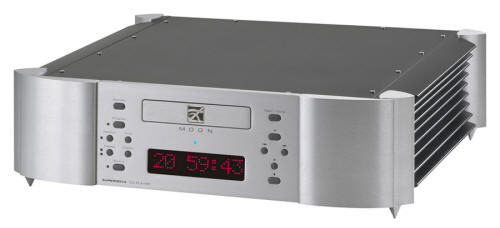
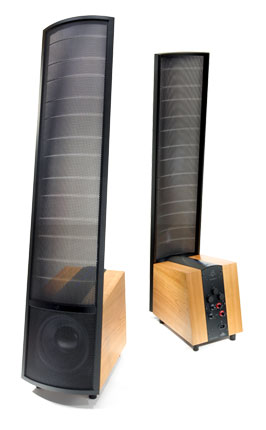 The
quest for the ultimate electrostatic loudspeaker began at Bell
Laboratories—and 80 years later, high-end audio companies such as
Martin-Logan continue to perfect the technology. Following on the heels
of such outstanding electrostatic hybrids designs such as the Quest, reQuest and Prodigy speakers, Martin-Logan's newest Summit loudspeakers
is a stunning accomplishment and sets performance standards for all
speakers, be they of dynamic or planar persuasion.
The
quest for the ultimate electrostatic loudspeaker began at Bell
Laboratories—and 80 years later, high-end audio companies such as
Martin-Logan continue to perfect the technology. Following on the heels
of such outstanding electrostatic hybrids designs such as the Quest, reQuest and Prodigy speakers, Martin-Logan's newest Summit loudspeakers
is a stunning accomplishment and sets performance standards for all
speakers, be they of dynamic or planar persuasion.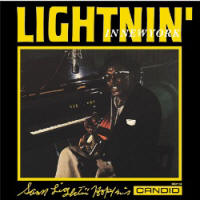
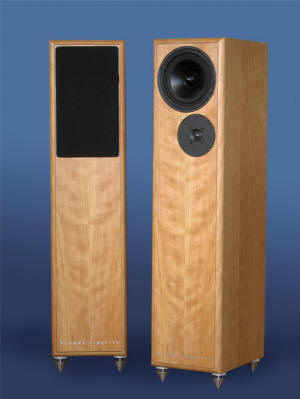
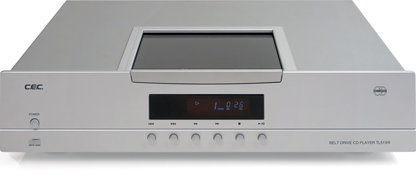
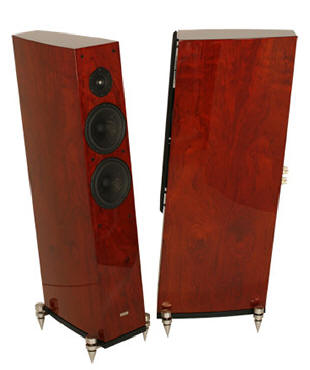
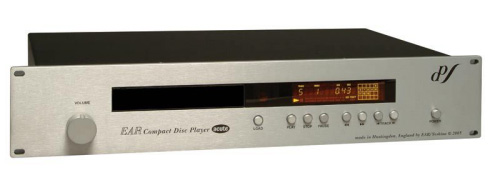
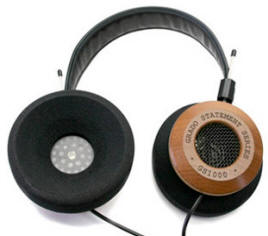
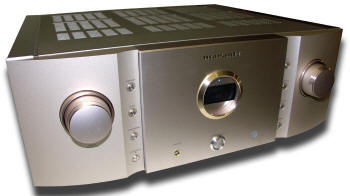
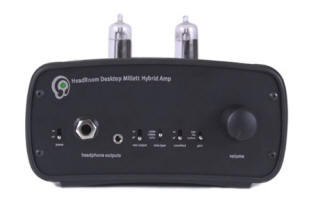
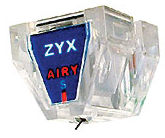
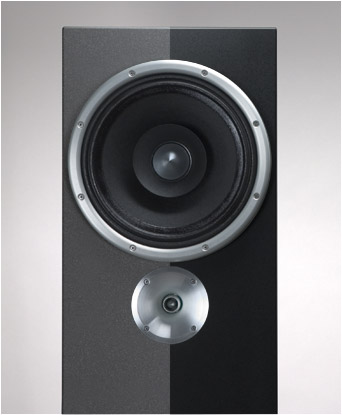
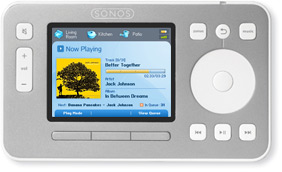

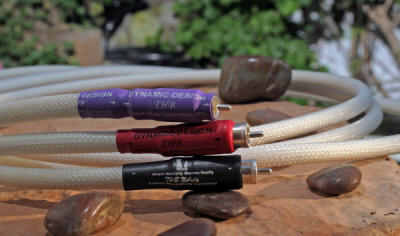

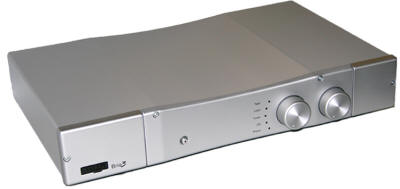
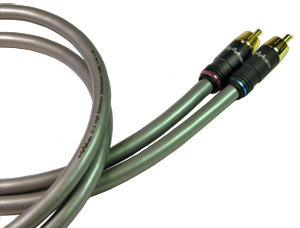
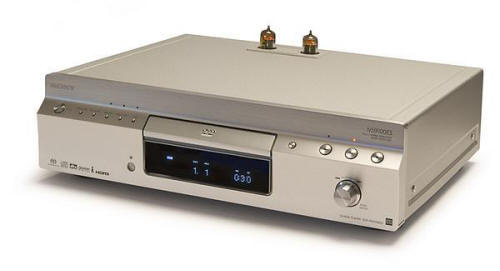
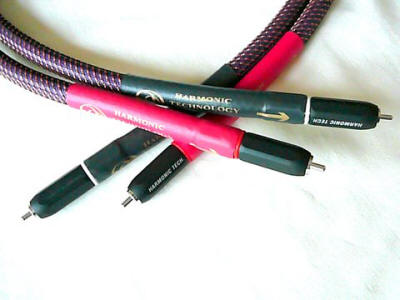
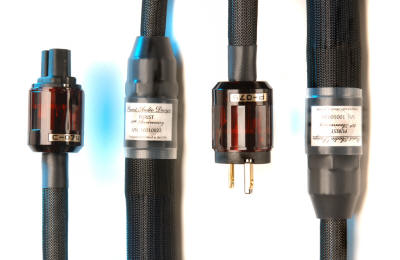
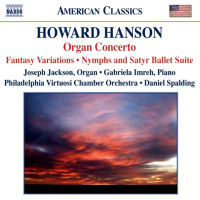
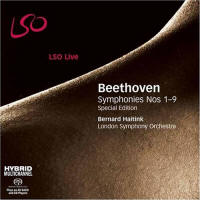
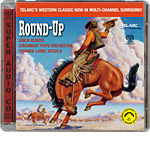
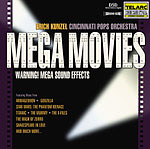

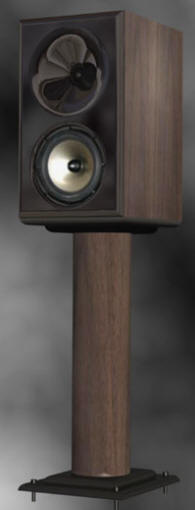
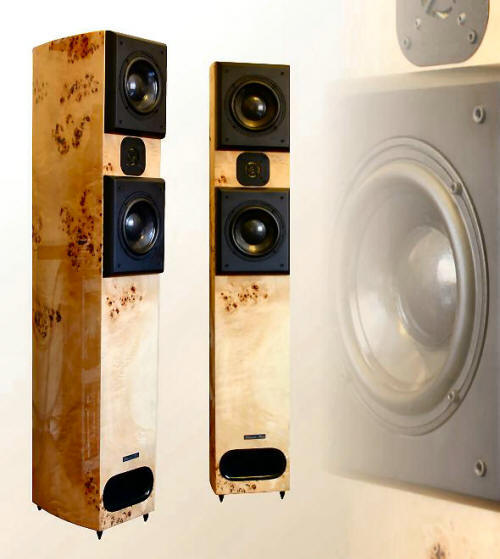

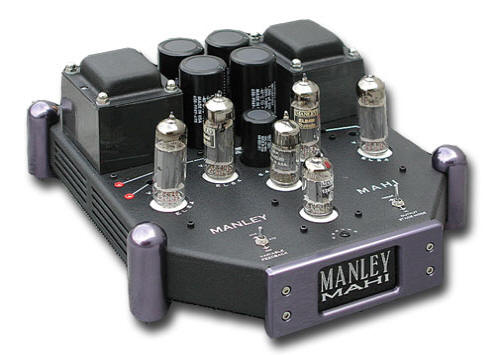
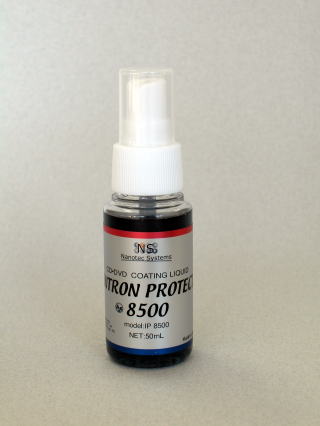
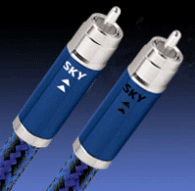
 I found
much to like about this speaker with the biggest surprise being a
suggested retail price of only $38K. Granted that is a lot of money, but
considerably less than competing speakers and the Evolution Audio
abounds with top quality fit and finish, superb driver choices and an
overall appearance that won me over in a single listening session.
I found
much to like about this speaker with the biggest surprise being a
suggested retail price of only $38K. Granted that is a lot of money, but
considerably less than competing speakers and the Evolution Audio
abounds with top quality fit and finish, superb driver choices and an
overall appearance that won me over in a single listening session.
